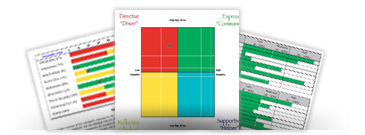Learn How to Sell From How You Buy – Matching Your Sales Process to the Buyers Process
Modern buyers are not as dependent on salespeople as before. They self-educate, research and meticulously compare when it comes to product and brand information online. Because of this, salespeople are involved less and less in the early stages of the buying cycle for most B2B prospects.
In fact, according to the Corporate Executive Board (CEB) company, buyers are 57 percent done with the sales process before seeking out a salesperson.
To combat that, sellers must begin thinking more like buyers. The simplest way to do this is to actually plot out all the steps that you, as a consumer, buy products and services for yourself. If you do this for something you have bought in the past, you will realize many points where a salesperson could have stepped in much earlier in your buying process.
You will find that your own buying process goes something like the following:
Stage 1: Product Investigation & Discovery
Just as sellers qualify prospects, buyers now qualify sellers, vetting them by using digital means to learn about the both the product and the company. Social media, review sites, company sites, and search engines help customers:
A prospect’s first impulse to buy is often triggered by social media as he or she becomes aware of a product due to its popularity with associates who “like” or “share” product-related statuses on Facebook or Twitter. That may lead to visiting social media pages of the vendor and Googling store websites and official vendor sites to find out more.
While browsing, customers begin to put together an image of the product’s basic features, using product descriptions, specifications and price. They click on related products, see a range of offerings from competing vendors, and begin to judge which products are good, better and best.
After basic discovery, prospects want to see the product in action. This may lead them to YouTube, Vimeo, Instagram or Vine where they can see the product in use and hear people talking about the product. They may even use Twitter searches to find unbiased tweets about others’ experiences with a firm.
Then, it’s time to judge the company and the customer satisfaction. Buyers wonder how good the customer service is, whether the product breaks down after months of use and whether manufacturer claims can be trusted. This leads them to review sites such as Yelp, Amazon or the Better Business Bureau.
Once customers find a company they feel they can trust, they start considering a contact. They might find a location and phone number using Google Maps or MapQuest. They might find a particular salesperson to contact by browsing LinkedIn, using keyword searches on Twitter, or messaging thecompany’s official Facebook page.
Seller’s Adaptation: Sellers can position themselves to draw the attention of customers during this due diligence stage of the sales process by creating authoritative content in multiple media formats and then distribute it via:
After all, aren’t many of these the type of sites that you visit when you are looking for information yourself?
It pays for salespeople to maintain fleshed out social media profiles. List background, sales territories, specialty knowledge and contact details so browsers of your content can turn into contacts. If you can capture email addresses at this stage, you are well ahead of the game, as you can establish a relationship that follows the buyer through to Stage 2, next.
Stage 2: Engagement with Sales Staff
Once customers have an intention to buy, they start looking for someone who will take their order, or at least provide more information. The salesperson who was able to “get in” at Stage 1 has the advantage here. When you buy, don’t you tend to revisit the people that you are already a bit familiar with?
Seller’s Adaptation: The key is to make it easy for the buyer to reach you when they are ready to pull the trigger. It is no use to have someone subscribe to your blog and be impressed, only to have them turn away from your website when they cannot easily call, send you an email, or engage in a live chat session to request help from a representative (salesperson).
Think about your past experiences as a buyer when designing your own process. Eliminate the points where frustrations tend to occur, such as having to go through many steps in order to ask a question or even to place an order if you sell B2B products online.
You can learn a lot about buyers by examining your own shopping habits. Design a process which would appeal to your own sensibilities first, and you will eliminate a lot of the problems your prospects face when shopping for B2B solutions, while reaching them earlier.



